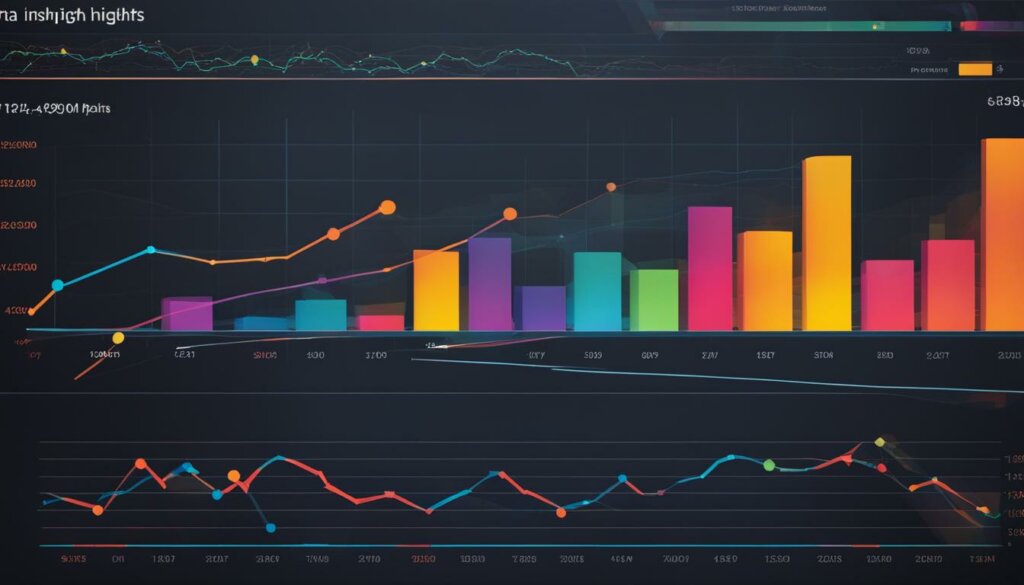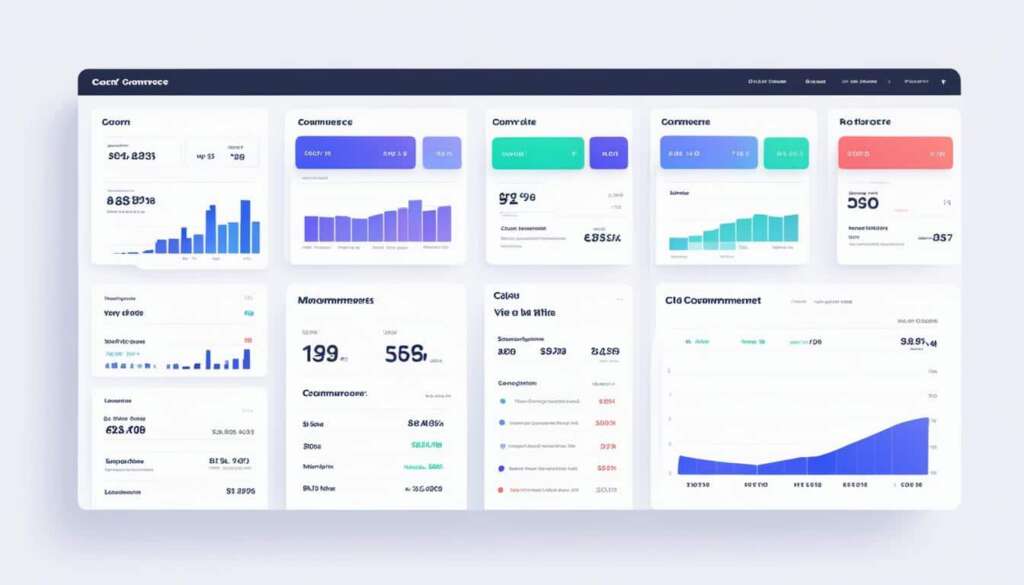Table of Contents
Big Data has revolutionized the way businesses operate in the digital era. For e-commerce companies, it has become a crucial tool for enhancing customer experiences and driving growth. By gathering, analyzing, and extracting value from large amounts of data, businesses can make data-driven decisions to optimize operations, reduce costs, and stay ahead of the competition.
In this article, we will explore the importance of leveraging Big Data in e-commerce strategies and how it can transform customer experiences. We will delve into key metrics such as Cart Abandonment Rate, Average Conversion Rate, and Average Order Value, and explain how e-commerce companies can use these insights to make informed decisions. Furthermore, we will discuss how data analysis can boost the bottom line for businesses, explore the rise of e-commerce and the opportunities it presents for SMEs, and introduce the power of Big Data solutions offered by GEODIS.
Three Key Metrics: Cart Abandonment Rate, Average Conversion Rate, and Average Order Value
E-commerce companies generate a vast amount of customer data, including purchase history, browsing behavior, and demographics.
These key metrics — Cart Abandonment Rate, Average Conversion Rate, and Average Order Value — play a significant role in measuring customer satisfaction and profitability in the e-commerce industry.
Cart Abandonment Rate
The Cart Abandonment Rate is a crucial metric that measures the percentage of visitors who add items to their shopping carts but do not complete the purchase. A high abandonment rate indicates potential issues in the checkout process or customer hesitations. By analyzing this metric, e-commerce companies can identify areas of improvement, such as simplifying the checkout process or offering incentives to complete the purchase.
Average Conversion Rate
The Average Conversion Rate reflects the percentage of total visitors who take a desired action, such as purchasing a product. This metric is an indicator of the effectiveness of a company’s marketing strategies and website design in driving customer engagement and compelling them to make a purchase. By optimizing marketing campaigns, improving website usability, and personalizing the customer experience, businesses can increase their average conversion rate and ultimately boost revenue.
Average Order Value
The Average Order Value refers to the average price of products purchased on a website. This metric helps e-commerce companies understand the spending patterns and preferences of their customers. By analyzing the average order value, businesses can identify opportunities for upselling and cross-selling, implement pricing strategies that encourage higher-value purchases, and tailor their product offerings to align with customer preferences and demand.
Incorporating these key metrics into data analysis allows companies to make data-driven decisions and develop effective strategies to improve marketing efforts, enhance the customer experience, and optimize profitability. Personalizing the customer journey, streamlining the checkout process, and implementing upselling techniques can help businesses maximize their revenue potential.
| Metric | Definition | Importance |
|---|---|---|
| Cart Abandonment Rate | The percentage of visitors who add items to their shopping carts but do not complete the purchase. | Indicates potential issues in the checkout process and can help identify areas for improvement. |
| Average Conversion Rate | The percentage of total visitors who take a desired action, such as purchasing a product. | Reflects the effectiveness of marketing strategies and website design in driving customer engagement and revenue. |
| Average Order Value | The average price of products purchased on a website. | Helps understand customer spending patterns and enables businesses to optimize pricing and product offerings. |
Boosting the Bottom Line with Data Insights
Data analysis plays a crucial role in boosting the bottom line for e-commerce companies. By harnessing the power of data analysis, businesses can unlock valuable insights that lead to increased profitability and growth.
One of the key benefits of data analysis is the ability to identify high-value customer segments. By analyzing customer data, companies can gain a deep understanding of their target audience and tailor their marketing and sales efforts accordingly. This targeted approach results in higher conversion rates, increased customer loyalty, and ultimately, more revenue.
Moreover, data insights can be used to refine pricing strategies, ensuring that products are priced optimally to maximize profits while remaining competitive in the market. By analyzing pricing data and customer behavior, companies can adjust their pricing strategy to capitalize on market trends and increase sales.
In addition to pricing, data analysis can help in cutting inventory management costs. By analyzing historical sales data, companies can forecast demand accurately, reduce excess inventory, and minimize stockouts. These informed inventory management decisions not only improve operational efficiency but also contribute to cost savings.
Furthermore, data insights facilitate the improvement of website design and user experience. By analyzing website metrics such as bounce rate, time on page, and click-through rates, companies can identify areas for improvement and optimize their websites accordingly. This enhanced user experience leads to higher customer satisfaction, increased conversion rates, and repeat purchases.
Lastly, data analysis provides companies with the opportunity to capture market share in a growing industry. By analyzing market trends, customer preferences, and competitors’ strategies, businesses can identify untapped opportunities and develop strategies to penetrate new markets and gain a competitive edge.
Unlocking the Power of Data Analysis
“Data analysis is not just about numbers; it’s about uncovering actionable insights that drive business success.” – John Smith, Data Analyst
In order to harness the full potential of data analysis, businesses need to invest in the right tools and expertise. Hiring skilled data analysts or partnering with data analytics firms can provide companies with the expertise needed to extract meaningful insights from their data.
Additionally, implementing robust data management systems and ensuring data accuracy and integrity are crucial for reliable data analysis. Companies should prioritize data security and compliance with data protection regulations to build trust with customers and protect sensitive information.
Overall, data analysis empowers e-commerce companies to make informed decisions, optimize operations, and drive profitability. By leveraging data insights, businesses can boost the bottom line, gain a competitive advantage, and thrive in an increasingly data-driven digital landscape.
| Data Insights for Boosting the Bottom Line | Benefits |
|---|---|
| Identifying high-value customer segments | – Higher conversion rates – Increased customer loyalty – More revenue |
| Refining pricing strategies | – Maximizing profits – Staying competitive |
| Optimizing inventory management | – Cost savings – Improved operational efficiency |
| Enhancing website design and user experience | – Higher customer satisfaction – Increased conversion rates – Repeat purchases |
| Capturing market share in a growing industry | – Penetrating new markets – Gaining a competitive edge |

The Rise of E-Commerce and the Opportunities for SMEs
The e-commerce market has experienced consistent growth over the past decade and is expected to continue its exponential expansion in the next five years. In 2022, the global e-commerce market was valued at $5.7 trillion, and by 2026, it is projected to surpass $8 trillion. With an estimated 25% of all retail sales taking place on e-commerce websites by 2030, this sector presents significant opportunities for small and medium enterprises (SMEs) and large corporations aiming to tap into the e-commerce wave.
SMEs, in particular, have the chance to leverage the e-commerce market to expand their customer base and increase revenue. However, along with these opportunities come specific challenges. One challenge that SMEs may face is pricing their products in volatile currency environments, which can significantly impact their profit margins. Additionally, supply chain disruptions can hinder the efficient delivery of goods and services, leading to dissatisfied customers and lost sales opportunities.
In order to navigate these challenges and capitalize on the opportunities presented by the e-commerce industry, continuous learning and upskilling are crucial for SMEs. Staying updated with changing industry trends and acquiring the necessary skills and knowledge will enable SMEs to remain competitive and adapt their strategies to meet the evolving demands of the e-commerce market.
Opportunities for SMEs in the E-Commerce Market
“The exponential growth of the e-commerce market provides SMEs with a unique chance to expand their reach, attract a global customer base, and drive revenue growth.” – Expert in E-Commerce Strategies
By capitalizing on the booming e-commerce market, SMEs have the potential to reach a vast customer base, both domestically and internationally. The online marketplace offers SMEs the opportunity to overcome traditional geographical limitations and access customers from different regions, thereby expanding their market reach.
Moreover, the e-commerce industry provides SMEs with a level playing field to compete with larger corporations. With the right digital marketing strategies and an effective online presence, SMEs can establish a strong brand identity and cultivate customer loyalty, which can lead to long-term growth and sustainability.
Key Challenges and Strategies for SMEs in the E-Commerce Market
While the e-commerce market presents numerous opportunities for SMEs, it is essential to address the associated challenges effectively. Pricing products in volatile currency environments requires careful analysis and strategies to maintain competitive pricing while protecting profit margins. SMEs can consider utilizing currency hedging techniques or partnering with payment providers that offer competitive exchange rates.
Supply chain disruptions pose another challenge for SMEs in the e-commerce industry. Establishing strong relationships with reliable suppliers, implementing effective inventory management systems, and diversifying sourcing options can help mitigate the impact of supply chain disruptions and ensure timely delivery of goods and services to customers.
Additionally, staying updated with industry trends, investing in technology and automation, and continuously upskilling employees are crucial strategies for SMEs to remain competitive and seize the opportunities offered by the e-commerce market. By embracing digital transformation and developing a data-driven approach, SMEs can optimize their operations, enhance customer experiences, and drive sustainable growth.
| Opportunities | Challenges |
|---|---|
| Expand customer reach globally | Pricing products in volatile currency environments |
| Compete with larger corporations | Supply chain disruptions |
| Foster brand loyalty and long-term growth | Continuous learning and upskilling |
The Power of Big Data with GEODIS
When it comes to optimizing retail supply chains, GEODIS offers innovative big data solutions that can revolutionize your business. Their flagship solution, #GEODISMyParcel, provides customers with a comprehensive view of their data, allowing them to optimize operating costs, manage inbound and outbound flows, and even organize product launches or store openings. By harnessing the power of big data, companies can make data-driven decisions, streamline processes, and enhance efficiency in cross-border delivery.
GEODIS understands the challenges that businesses face in the ever-changing digital landscape. With their big data solutions, they help unlock the potential of data in the e-commerce industry. By leveraging optimization techniques and advanced analytics, GEODIS enables businesses to stay ahead of the competition, drive growth, and deliver an exceptional customer experience.
Big data is no longer a luxury, but a necessity for businesses in today’s digital era. GEODIS provides the tools and expertise to harness the power of data and transform it into a competitive advantage in the e-commerce industry.”
– [Name Surname], E-commerce Expert
Benefits of GEODIS’ Big Data Solutions:
- Optimize operating costs by identifying inefficiencies and bottlenecks in your supply chain
- Manage inbound and outbound flows more effectively, ensuring timely deliveries and reducing fulfillment errors
- Organize successful product launches or store openings by analyzing market trends and customer preferences
- Enhance cross-border delivery efficiency by leveraging data insights and optimizing logistics processes
With GEODIS as your partner, you can unleash the power of big data and transform your e-commerce operations. Their expertise in optimization and cross-border delivery ensures that your business stays ahead of the curve and achieves sustainable growth in today’s competitive marketplace.

| Benefits | Features |
|---|---|
| Optimize Operating Costs | Identify inefficiencies and bottlenecks in the supply chain |
| Manage Inbound and Outbound Flows | Ensure timely deliveries and reduce fulfillment errors |
| Organize Successful Product Launches | Analyze market trends and customer preferences |
| Enhance Cross-Border Delivery Efficiency | Optimize logistics processes and leverage data insights |
Conclusion
Harnessing the power of Big Data is imperative for e-commerce businesses to refine their strategies, enhance customer experiences, and remain competitive in the digital world. By leveraging data insights and analytics, companies can improve their marketing strategies, personalize customer experiences, optimize pricing and inventory management, enhance customer service, and make informed decisions to drive profitability and growth.
The e-commerce industry presents significant opportunities for growth, and businesses that embrace Big Data and implement data-driven strategies are well-positioned to succeed in this dynamic and competitive landscape. By utilizing the vast amount of data available, companies can gain valuable insights into customer preferences and behavior, enabling them to tailor their offerings to meet customer needs better. This, in turn, leads to improved customer satisfaction, increased conversion rates, and higher revenues.
Furthermore, Big Data provides businesses with a competitive advantage by enabling them to make data-driven decisions in real-time. Whether it’s optimizing pricing strategies, identifying customer segments, or improving website design, the ability to analyze and interpret data allows businesses to stay ahead of the curve and respond quickly to changes in the market.
In conclusion, integrating Big Data into e-commerce strategies is a crucial step for businesses looking to thrive in the digital landscape. By harnessing the power of data analysis, companies can unlock valuable insights, refine their operations, and drive success in the ever-evolving e-commerce industry.
FAQ
What is Big Data and how does it relate to e-commerce strategies?
Big Data refers to the vast amount of data that is generated and collected in the digital era. In the context of e-commerce strategies, Big Data enables companies to gather and analyze large amounts of customer data in order to improve customer experiences, optimize operations, and drive growth.
What are the key metrics that impact customer satisfaction and profitability in the e-commerce industry?
The key metrics in the e-commerce industry include Cart Abandonment Rate, which measures the percentage of visitors who add items to their shopping cart but do not complete the purchase; Average Conversion Rate, which measures the percentage of total visitors who take a desired action like purchasing a product; and Average Order Value, which refers to the average price of products purchased on a website.
How does data analysis boost the bottom line for e-commerce companies?
Data analysis plays a crucial role in boosting the bottom line for e-commerce companies. By analyzing customer data, companies can identify high-value customer segments, tailor their marketing efforts, optimize pricing and inventory management, improve website design and user experience, and make informed decisions that drive profitability and growth.
What are the opportunities and challenges for SMEs in the e-commerce market?
The e-commerce market presents significant opportunities for small and medium enterprises (SMEs) to capitalize on the growing digital wave. However, SMEs may face challenges such as pricing products in volatile currency environments and handling supply chain disruptions. Continuous learning and upskilling are crucial for SMEs to adapt to changing industry trends and remain competitive.
How does GEODIS help businesses leverage Big Data in the e-commerce industry?
GEODIS offers big data solutions for optimizing retail supply chains. Their innovative solutions, such as #GEODISMyParcel, provide customers with a comprehensive view of their data, enabling them to optimize operating costs, manage inbound and outbound flows, and organize product launches or store openings. GEODIS helps businesses unlock the power of Big Data in the e-commerce industry and drive success in a rapidly evolving digital landscape.
Why is harnessing the power of Big Data essential for e-commerce businesses?
Harnessing the power of Big Data is essential for e-commerce businesses to refine their strategies, enhance customer experiences, and stay competitive in a digital world. By leveraging data insights and analytics, companies can improve marketing strategies, personalize customer experiences, optimize pricing and inventory management, enhance customer service, and make informed decisions to drive profitability and growth.







